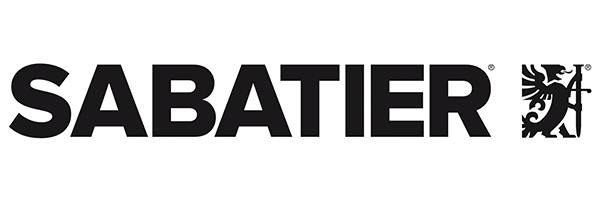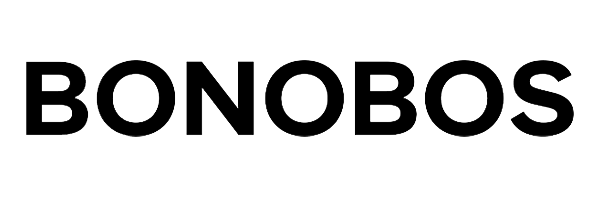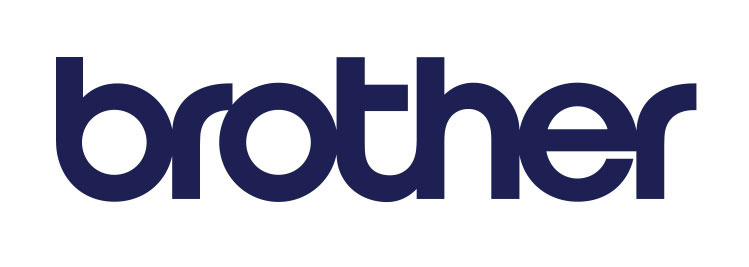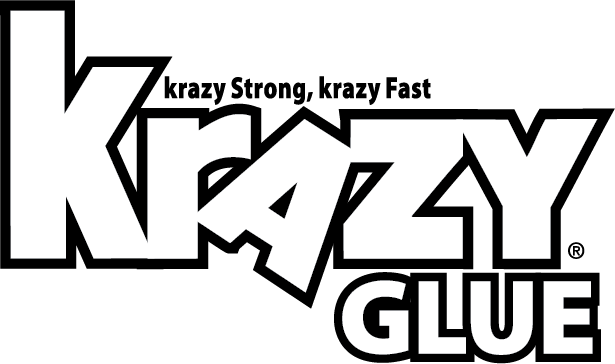The Ultimate Guide to Video Marketing in 2024
Billions of people all across the world watch videos every single day. From YouTube to their Facebook newsfeed, consumers are absorbing hours upon hours of entertaining and informational content. The more business owners and marketers who understand this, the more who decide to start using video marketing. Now that it is 2024, there's no better time to add video content to your overall marketing efforts. The days of consumers reading newspapers and magazines are long gone as a growing love of video takes over. Your business needs video and this Ultimate Guide is here to help you make that happen! Take a look at all the helpful tips and suggestions below to learn more about the most effective form of marketing around.
Table of Contents:
- What is Video Marketing?
- Chapter 1: Identifying Your Target Audience
- Chapter 2: Creating a Video Marketing Strategy
- Chapter 3: Types of Videos
- Chapter 4: Finding a Video Production Team
- Chapter 5: The Three Stages of the Video Production Process
- Chapter 6: The Use & Distribution of Your Videos
- Chapter 7: How Does Video Help SEO?
- Chapter 8: Native Video Content vs. Produced Video Content
- Chapter 9: Tracking Relevant Video Analytics
- Chapter 10: The ROI of Video
- Conclusion: Now It's Time to Make Videos!
What is Video Marketing?
The definition of video marketing is clear and simple. It is the use of video content to promote your company, brand, service, or product. Any effective marketing strategy will have video as an integral part of the plan. Especially when it comes to business, video marketing makes your company look more professional, builds trust, and increases organic search traffic. Whether you are making brand videos, explainer videos, or a product demo, these powerful pieces of content offer a higher level of engagement than any other advertising options. The benefits of video marketing range from improving SEO to boosting your conversion rates. Read on to find out exactly how to make a video strategy, what types of video you need, and what to do with your videos once they're created.
Chapter 1: Identifying Your Target Audience
Creating content without a video marketing target audience is like driving down a street at night with no headlights. Without recognizing and understanding the people you want your videos to reach, the content will crash and burn. Too many companies and self-proclaimed video marketing experts simply glance over this step or end up skipping it entirely. The reality is that it should be one of the first (if not the first) steps in your video marketing plan. Knowing how to find your target audience will streamline this process and give you a headstart among your competitors.
Consider Customer Demographics You Can Target
Did you know your videos can be geared and directed toward key demographics and particular groups of people? Platforms like Facebook have tools that allow you to focus on reaching core audiences, custom audiences, and lookalike audiences. As you think about your target audience for video content, one of the steps is to choose the end viewer you want each piece to reach. Core Audiences: This option gives business owners the chance to target specific individuals within demographics such as age, gender, marital status, jobs, and even household income. You can also narrow down your audience to geographic locations, interests, and more. Custom Audiences: Customizing your video marketing target audience lets you remarket to people who have engaged with your company either online or offline. Whether they liked one of your posts, commented on a video, or filled out a contact form, you can send relevant content to these individuals to lead them further down your marketing funnel. Lookalike Audiences: If you already have an online following, targeting a lookalike audience places an emphasis on finding new viewers who have similar interests to your current customers. Data is gathered about your followers, which is then compiled into a general "mixing pot" that you can use to get in front of comparable audiences.
Determine Who Would Benefit from Your Product or Service
Deciding how to find your target audience involves research and a personal understanding of what you have to offer people. Your business or product was created to fill a need and it's essential that you identify who will best benefit from it. Market research is a pivotal part of this process so you can narrow your focus and create pointed videos that are aimed at each demographic or audience. The better your intel, the better your video content will be at converting viewers into leads and leads into buyers. Asking yourself questions about your product or service will open up the conversation and help you know the best people to focus on. Consider basic inquiries such as:
- What problem does my product/service solve?
- Why would someone want my offering over my competitors?
- When would a person need this in their life? (This could be a certain age, time of year, or other time-related factors)
- Where would people use this product/service? (This would include geographical information or whether the item would be used online vs in person)
- Who already owns this that could benefit from my superior product/service?
- How would someone look up information about this product or service?
Join Relevant Social Media Groups & Online Forums
No matter what industry or niche you are in, odds are that groups and conversations are available online where people are actively talking about it. You'll want to have eyes on these discussions so you can immediately see what people are saying about your field and the struggles they are facing. This opens up avenues for you to narrow your target audience for video content that references these conversations. You'll be able to answer questions in your videos that are already being asked online and point out how what you offer is the solution. Some of the most popular online places to gather this information include: LinkedIn Groups: As a common social media outlet for professionals, LinkedIn Groups offer the chance to have intelligent conversations with like-minded people in your industry. Users generally use these groups to ask questions, develop valuable connections, and offer their own insights or suggestions on relevant topics. Facebook Groups: Over 10 million groups are run within the social network of Facebook. Companies and brands are able to create their own or join groups run by individuals who have opened up conversations that are applicable to specific industries. Instagram: Among the most powerful social media outlets for sharing photos and videos, Instagram is one of the top options for marketing to an audience. You can engage through comments and open up dialogues with people who may be interested in what you have to offer. YouTube Channels: There are more than 37 million YouTube Channels, a number that is growing at a staggering rate of about 23% every year. With a chance to comment and converse with people on almost every video on this platform, a company can use this as a key tool in finding their video marketing target audience. Reddit: With over 330 million users, Reddit is the largest online forum where people go to talk about anything and everything. Broken down into categories called "subreddits", there's an opportunity to join a massive community of people who are keeping up with details and trends related to your business. Quora: As the ultimate Q&A website on the web, Quora is the place where many people go to get their questions answered. With a quick search, business owners can discover thousands of questions potential customers have asked about products or services within their industry.
See Who Your Competitors are Targeting
Leaders have been researching their competition since the beginning of time. Kings would send spies to see rival castles, taking special care to identify the strengths and weaknesses of their fortifications. Sports teams watch film of their upcoming opponents to find ways they can capitalize on vulnerabilities and win more games. Likewise, companies can research their business competitors to learn about who they are targeting with their video marketing. This opens up opportunities to revamp their strategies and create better content that will outdo fellow companies in your industry. For example, a creative way you can see what target audience your competitors are trying to reach on Facebook is by spending some time looking at their website and clicking through a few of their pages. About an hour after you have looked at their site, make your way over to Facebook and scroll through your newsfeed to see if any ads pop up by that company. If you come across an ad, click on the ellipsis (...) in the top right corner and select "Why am I seeing this ad?" From there, you'll see a handful of the advertising factors you meet on their target ad campaign. Additional research will give an even deeper look and more details you can use as you create video marketing content that is sent out to similar target audiences.
.jpeg)
Retarget Previous Customers and Site Visitors
Going back to Custom Audiences mentioned earlier in this chapter, a great tactic to identify your target audience for video marketing is getting back in touch with people who are already familiar with your brand. This includes people who have already made a purchase from your business or those who have visited your website and social media profiles. Customer loyalty is essential to the long-term success of any business, which usually means you need to get previous clients to make more than one purchase. You can retarget these individuals using email marketing campaigns that feature videos focused on additional products or services you offer. Another strategy you can follow includes using Facebook or Google AdWords to retarget people who have seen specific URLs on your website. If they saw a certain service page or product and didn't make a purchase, they likely need more information or had reservations about the offering. This makes it easier for you to send them more pointed content that is educational and convincing.
Don't Focus on Too Many Target Audiences at Once
With a few exceptions, most industries have more than one target demographic they are trying to reach with their video marketing. But with generational differences and varying viewpoints, it is impossible to cater every video to every target audience at once. Break down your video content into groups that will focus on the relevant people within a set demographic, location, or interest. Create video content for one target audience at a time so it has a better chance of engaging and converting those individuals. You can even do A/B testing with video content to determine what works best. Certain types of videos may perform better with one target audience and completely tank with another. Once you've found the sweet spot for each one, your video marketing efforts will flow much more easily.
Chapter 2: Creating a Video Marketing Strategy
Once you know who you are targeting with your video content, it's time to put together a plan for the videos you want to make. A video marketing strategy is created to ensure your content is clear, engaging, and relevant to your brand. Oftentimes, this blueprint includes details about your goals, budget, timing, and other important factors. The elements of a video marketing strategy should be followed closely to confirm each aspect is meeting the key requirements.
Do a Marketing Audit & Conduct Market Research
The word "audit" tends to have a negative connotation due to its use by the IRS and other entities. But a marketing audit is a fun chance for you to learn more about your business, your industry, your customers, and your competition. This research will open your mind up to ideas that will improve your video marketing strategy. Market research is conducted in a variety of ways including online searches, potential customer surveys, prospect interviews, focus groups, and customer observation within your niche. This stage of your video strategy development is where companies create buyer personas, name their competition, create product/service descriptions, and other crucial details that will impact their content. Once you find the information you need, your company should then analyze what you've learned before moving forward. Often referred to as SWOT Analysis, this review explores your:
- Strengths: Advantages you have over competitors and what makes you stand out from the crowd.
- Weaknesses: Immediate challenges your company faces or ways you can improve your services or products.
- Opportunities: Upcoming developments in your field and new ideas you haven't yet implemented into your business.
- Threats: Consider future factors surrounding the industry demand, technology limitations, and other things that could hold you back.
Choose the Goal for Each Video Campaign
Author and motivational speaker Tony Robbins has said, "Setting goals is the first step in turning the invisible into the visible." Without an objective for your video marketing strategy, your content will lack clarity and leave viewers lost or confused once it's over. And that's if they don't hit the Back button before finishing the video in the first place. As you prepare your content marketing video strategy, look closely at what you want each campaign to achieve. A few of the best goals for video marketing:
- Boost brand awareness and loyalty
- Get people to sign up for a newsletter
- Reach a wide audience of unique viewers
- Drive traffic to a specific landing page or website
- Position your company as an authority within your industry
- Improve overall engagement such as likes, shares, comments, followers
- Convert viewers into leads that are ready to purchase your product or service
Come Up with the Story You Want to Tell
Storytelling is essential to any form of marketing but this goes double for video content. Jennifer Aaker, a Professor of Marketing at Stanford has said that "stories are remembered up to 22 times more than facts alone." When creating a video marketing strategy, you'll want to decide what the story will be. A well-known branding strategist named Donald Miller discusses this concept at length in his StoryBrand online courses. One of the main points he makes is that you must position the customer as the hero of each story and help them see how your brand helps them accomplish whatever they're trying to achieve. Your story will be a significant part of your content marketing video strategy as you use it to educate and entertain viewers who are interested in your brand.
Determine Your Short-Term & Long-Term Video Needs
Are you looking to make a single video that will only be used in one place? Or do you want to create a video series that you'll be able to share one at a time over the course of weeks or even months? Based on your goals, you'll need to decide whether you want to work with a video production company on a per-project basis or with a long-term content creation plan. While this part of your strategy will also depend on your budget, the bigger consideration is based on how you want to roll out your videos. A landing page video can be done as a single project and will likely remain on your website for months or years at a time. But a YouTube or Facebook series will take more time to plan, film, and create as part of the sharing process. Whether you are putting together a social media video marketing strategy or content for your website, these factors will help you determine the types of videos you'll need. It is always possible to start off with a project-based agreement and then lead into a long-term plan as your business grows and changes.
Set Up a Timeline
From the initial goal setting to the distribution date, it's important to establish an agenda as part of your video production marketing strategy. Let's take a look at an average timeline for a project. This timeframe can change depending on the types of videos, how much content you plan to create, and how much video editing is required. It can also be adjusted if actors or spokespeople are involved and there is a specific location where you're trying to film. Weeks 1 - 2 (Planning):
- Create content strategy
- Set goals
- Determine brand messaging
- Decide on a budget
Weeks 3 - 5 (Production Process):
- Creative preparation
- Scriptwriting
- Production
- Pre-production - Planning and organizing
- Production - Filming (**Unless you're working on a massive amount of content, your production should rarely take more than a day or two to film.)
- Post Production - Editing, Adding on-screen text, and beyond
Weeks 5 - 6 (Approval & Distribution):
- Receive and review first video drafts
- Additional edits and adjustments
- Distribute to website, social media, and other platforms
Chapter 3: Types of Videos
There tends to be a lot of confusion when it comes to the differences between many types of videos. Especially within corporate video production, many of these terms are often used interchangeably. While some sites will define a brand video as one thing, others will define them as something completely different. We're here to set the record straight. In video marketing, you need to know what kind of video you want to create. This will ultimately depend on your goals and what action you're trying to get the viewer to take after watching it. From time suggestions to objectives, these are the main types of videos to consider making for your business.
Brand Videos
As one of the first video types that should be on a company's marketing radar, brand videos are created to provide valuable information about your brand in a short period of time. Your brand represents the identity, reputation, and perception of how people see your company. While this includes items such as logos and trademarks, it is more about your specific style, your company vision, and the way your products or services make people feel. The ultimate goal of a brand video is to let viewers know what you have to offer and why they should become a customer. They're great for developing brand awareness, boosting trust, and establishing your company as an authority in your industry. There are all kinds of brand videos you can use in video marketing including explainer videos, vlogs, origin stories, company culture videos, humorous skits, and more. Benefits of Making Brand Videos:
- Educate people about your business
- Prove your company is a trustworthy source of information
- Provide value that leads people to the next step of your sales funnel
- Show off the people who have made your brand what it is today
- Boost your SEO by having a brand video on your website
Explainer Videos
Placing a special emphasis on the products or services your business offers, explainer videos are made as a focused type of brand video. The main intent of this video marketing tool is to inform viewers about how what you provide will help them solve a specific problem in their life. Regardless of your industry, explainer videos are meant to be highly engaging and centered around educating the people who watch them. The more you can do to make them entertaining will ensure these pieces of content convert more effectively. Taking between 30 - 90 seconds, use your explainer videos to describe the features and functionality of whatever product or service you are presenting. They're also commonly known as product demo videos and can be done in live-action or with animation. Benefits of Making Explainer Videos:
- Briefly describe a problem and what you've created to solve it
- Easily shareable across any platform
- Can be used for years to educate about your products
- An eye-catching opening as a way to capture attention
- Showcase your brand's authority and knowledge on a subject
Social Media Videos
When it comes to creating video ads, one of the most common places to share this content is on social media platforms. And the key thing to consider when making these videos is how crucial it is that you capture the viewer's attention immediately. Otherwise, there's nothing stopping them from scrolling down to the next post on their social newsfeed. While the term social media videos covers an extremely wide range of content, it's important to understand the types of videos that can and should be shared on these sites. Some videos may not be made to perform well on social platforms and should be saved for other designated spaces. Facebook, Instagram, and YouTube have billions of users each and stand as the most popular sites to share videos online. Others like Twitch and TikTok are growing rapidly as well but currently remain focused on user-generated content at this time. From a business perspective, social media videos open up the opportunity to interact with a following and to turn new leads into loyal customers. While sharing photos on these sites is always going to be more effective than simply posting text, videos reach an entirely new level of engagement. When planning out your video marketing strategy, you'll need to determine what content you will share on social media organically and what videos you will promote using paid ads. Organic video content will focus more on engaging with your current followers. It is made for people who are in various stages of your marketing funnel as you work to lead them closer to making a purchase. Paid video ads are shared with the intent to reach a targeted audience based on demographics, geographic location, and other factors. They're meant to instruct viewers and get them to follow a clear call-to-action. Benefits of Making Social Media Videos:
- Increase brand awareness across multiple channels
- Get more engagement on social media posts than with images or graphics
- Reach a target audience with the use of paid ads
- Lead organic or paid traffic to your website or landing page
How-to Videos
According to Google, learning more about a product and how it works is one of the top 3 reasons people watch videos on YouTube. This presents an incredible opportunity for companies to create video content that showcases their product, how it works, and how it can help people. Also known as tutorial videos or instructional videos, how-to video content is the best way to improve your social proof. People who see these videos are more inclined to share them with friends and family members who they feel would benefit from the product or service as well. Most how-to videos range between 2 to 10 minutes depending on what is being shared and how much detail must be shared to get the point across. The more you can make them simple and easy to understand, the better they will be at converting people into paying customers that buy your offerings. Benefits of Making How-to Videos:
- Develop social proof of your product or service being a reliable option
- Get more social shares
- Boost your search rankings on both Google and YouTube
- Educate viewers on how your product works and how it helps
Visual Effects (VFX)
From Star Wars and Lord of the Rings to Avatar, Jurassic Park, and The Avengers, visual effects (VFX) have been a major part of some of the most dynamic and time-tested movies ever created. And while most companies don't have the same level of effects needed in their video marketing, VFX are still a valuable way to grab attention in business advertising. While visual effects may not be designated as a type of video on their own, they can be added as a way to make other video types stand out and be more engaging. Keep in mind, VFX doesn't always mean spaceships, massive fictional worlds, big explosions, and huge computer-generated dinosaurs. These effects are used to enhance film footage with computer-generated graphics that are made to fit perfectly within the scene. Benefits of Using Visual Effects in Your Video Marketing:
- Get people to stop scrolling through their newsfeed
- Increase engagement
- Pull more visitors to your website
- Boosted brand recognition
- Convert more sales
Whiteboard & Animation
You've no doubt seen one of those whiteboard videos for a new business sharing details about their company. Normally used for startups as a budget-friendly starting point for video, these simple and to-the-point animations are usually made as a quick way to educate viewers about products or services. The concept of using a whiteboard and marker sets the viewer into "learning mode". You can teach potential customers in a unique and engaging way. They tend to be lighthearted and lead the individual watching through a simple process with the hope they will take a specific action at the end. While whiteboard videos have their advantages for companies just getting off the ground, they're not the best option for long-term video solutions. As a business becomes more established, you'll find it is better to bring more realistic elements into the content as a means to look more professional. In the end, most companies move away from these types of videos after their initial launch.
Case Study Videos
Often used as a way to showcase your product as a story, case studies are a highly-underrated way that you can let people know what your company has to offer. They're an incredibly helpful resource for your potential customers as they are led through someone else's journey of using your product or service. Working as a type of client testimonial, case study videos are effective as they feature a real-world scenario that clearly defines how a person was positively impacted by your brand. As someone sees one of their peers find a resolution for the same problems or questions they are currently facing, that person will be more likely to seek out more information. Benefits of Making Case Study Videos:
- Get an endorsement from someone who already likes what you offer
- Show how other people have benefited from your brand
- Use case studies for PR related content and promoting on other channels
Of course, there are other types of videos that a video production company can make, but these are the most popular ones used by businesses as part of their video marketing plans.
Chapter 4: Finding a Video Production Team
When you search for a video production team, you need to find a reliable, trustworthy company for your campaign to be a success. With video marketing, you can get more views, bring customers into your sales funnel, and gain exposure for your brand. The following are things to look for as you try to identify the best video production company to help you.
Strong Video Portfolio
Before you hire a production team, you'll want to look at examples of their work. The production company's past achievements show what they are capable of. If none of their previous projects look professional or engaging, it's less likely they'll be able to effectively handle your business project as well. Is the production company adaptable? Along with looking at the quality of work, you should also check out their project styles. Your brand is unique, so a good video production company must be capable of adapting to your needs.
Positive Online Reviews
Another way you can determine if a team is the right fit is by searching through Google video company reviews as well other reputable review sites like Clutch. These review sites help you get feedback on what a typical customer experience is like, so you can determine if the company is right for you.
Understands Your Target Audience
When you know your target audience, you can tailor your videos to them, share your videos on the correct platform, and maximize your campaign budget. If you target the right audience, your video marketing will have higher engagement and conversion rates. Additionally, targeting an engaged audience means they will be more likely to share your videos and spread word-of-mouth referrals.
Reliable SEO Knowledge
Even if your campaign relies entirely on videos, your video production company needs to have a basic understanding of search engine optimization (SEO) principles. Search engines use advanced algorithms to determine what a video is about and to provide their searchers with relevant content. By using SEO correctly, your video production company can increase your odds of having a video reach a larger organic audience.
Using Videos to Promote Their Own Business
As you look for a video production company, you need to see how they market their own business. You should avoid teams that don't use video in their marketing. If they can't create videos that are good enough for their own business, there's no way they will be able to make videos to help out your marketing campaign. You can use the company's videos as an example of their craftsmanship. Because of the marketing power of video, they should have devoted their resources to creating the best possible video content for their own brand. If they can't create a decent video for their own needs, it is highly unlikely they will be able to help your brand out either.
Effective Distribution Strategies
How will people end up seeing and interacting with your video? Having a video is useless unless there is a way for viewers to access it. Your video production team must know how to create social media packages and other effective video distribution strategies so you can share your content to the right places once it is ready.
Branding Experience
Branding helps you design an image for your company, and your videos should match the main vision or mission of the business. A video production company must know how to support your branding goals as they plan and create your videos. Otherwise, your content could end up detracting from your overall brand, leaving viewers lost and confused.
Expertise with Video Web Tools
Video marketers must understand how to use a variety of web tools like YouTube, Vimeo, Instagram, Facebook, and others. You are hiring a video production company because they know all about creating and sharing videos. If they can't use the latest and most advanced web tools, then they aren't going to make video content worth your time or money.
Able to Take Charge
The last thing you want is to waste time hand-holding the video production company as they struggle to create video content for you. You need to work with a company that is capable of taking charge of the project. The ideal video marketing team will be able to achieve your project's goals because of its exceptional insight and industry expertise.
On-site Scriptwriters
A script is the focal point of your video, so it ultimately determines whether your video campaign is a success or a failure. Your script is what crafts the message about your product or services and makes sure that your communication is streamlined for the viewer. Having a script allows you to save production time because your team already knows what they are supposed to do. But not all scriptwriters offer the same quality of work. Your video needs a script and the ideal production company uses on-site scriptwriters. When companies outsource their scriptwriting, it is impossible to be sure of the script's quality. By using on-site scriptwriters, the production team has already vetted their writers and can guarantee the quality level of your script.
Good Communication Skills
The first point you reach out to a company can be a good indicator of how their communication will be in the future. If a business takes days or even weeks to respond to your first inquiry, odds are that will likely be the norm for them. But if you reach out to Top Notch Cinema, we'll get back to you during business hours within 20-30 minutes. Try it out by calling (855) 862-3456 today! When you need help or have a question, you don't want to wait for days or weeks to get a response. A dependable video production team will respond quickly when you need assistance, so you can immediately solve your problem. Before you hire a new team, you should always pay attention to their communication skills. In addition to helping the company understand your needs, strong communication skills are also vital for telling an engaging story through high-quality videos. To do this properly, they must be excellent communicators in more ways than one.
Short-term & Long-term Solutions
While you may only need a single video made today, this won't be the case forever. As you see the success and engagement video marketing provides your business, you will want to have more content made. With this in mind, you should find a company that offers both short and long-term video solutions. Because the company you chose already has footage from past filming days, they can use parts of that for future projects. They will also know your brand and won't have to go through a new onboarding process every time you need another video. As you decide to build a long series of videos or an extended video campaign, they can tailor their services to your company's objectives.
Choosing the Top Video Production Team
In the end, it is also important that the video marketing company you choose is always willing to adjust the messaging of your script and edit your videos as you see fit. While a reputable team will always share suggestions and their own professional insight, they will also understand that you have the experience and knowledge of your industry.
Chapter 5: The Three Stages of the Video Production Process
Now that you've decided between making your own videos and hiring a production company to assist you, it's time to begin the production process. These three stages will help you organize your operations and avoid missing any key steps.
Pre-Production
It is almost impossible to create engaging video content without planning it out ahead of time. From content ideation and scriptwriting to finding the people who will be in the videos, this is what you should plan on during the video pre-production process.
Prep Work
This will vary a bit based on whether you decide to make videos yourself or hire someone to help you. One of the most important aspects of preparing for your videos when working with a video production team is ensuring they understand you, your business, and your brand. Any reliable video company will know this and will get to know you better long before the Record button is ever pressed on a camera. This is also the point where you'll choose the filming location and determine if you want to utilize actors or a spokesperson in your video. Here at Top Notch Cinema, co-founder James Orfanos handles this crucial step by speaking with every client we work with. He takes the time to learn more about people on a personal level and then dives right into the business side of the video preparation process. James's goal is to ensure every aspect of your videos focus on your target audience and how your brand is perceived from start to finish.
Creative Planning
This step is where you brainstorm, create the content outline, and begin setting the groundwork for the first draft of your script. It's a fun time to get all of your best ideas out to determine what direction you want your video to go. Some of the main points you want to finalize in this stage are:
- Goals
- Plot
- Mood (Funny, serious, professional, etc.)
- Actors
- Locations
- Video length
- Call-to-action
A professional video production company will provide you with feedback and their industry expertise on these topics to ensure they lead to the best possible results.
Booking
As part of planning out business videos, you'll want to decide whether the spokesperson will be an actor or an owner of the company. If you choose to hire someone for this role, then your video team will cast actors that match the tone, style, and vision you want to achieve. This can be done through an interview process or they may have already worked with an actor in the past who would be perfect for the job. Not only will you need to pick who will be in the videos, but you'll also have to decide where the filming will take place. Vetting locations can be difficult depending on your specific needs. In some cases, you may be able to film everything in a studio in front of a backdrop. While other scenes may call for using someone's home, a business office, or even an outdoor location like a park.
Scriptwriting
The next item on the agenda is for you or your video team to write an engaging and effective script for the content. This process includes everything from the dialogue and the actions to the proper camera angles and the setting each scene is in. Your script must mention the problem, provide the solution, and keep everything within the previously decided time constraints.
Determining VFX
If you want to use visual effects in your video marketing, you'll need to integrate that into your script and planning ahead of time. It will be a major factor in deciding where the camera will be focused, how the people in the video act, and what the setting will look like.
Production
The day of shooting brings with it some of the most technical aspects of the video production process. When this exciting day arrives, it's nice to know you're working with someone who knows what they're doing and will handle the project perfectly. At Top Notch Cinema, our Head of Production is Greg Parker, an Emmy Award-winning producer. He has more than two decades of experience in everything from Cinematography and Video Editing to Sound, Lighting, and beyond. Come filming day, Greg is laser-focused on making sure everything runs smoothly and doesn't leave until he knows it will be exactly right. These are the main components that make up production day.
Script Review
Taking a look at the script one final time will open up the chance to make any minor last-minute adjustments. You'll want to ensure it gets the points across that will help viewers learn about your company and that the CTA is strong.
Audio
Sound can be one of the most difficult parts of the production process. If it isn't done correctly the first time, you could end up having to go back and redo the entire video shoot. Unless you're simply making a vlog with a smartphone only a foot or two from your face, you'll need additional sound equipment to ensure there is high-quality audio. Some of the standard video production equipment professional company's use for audio include:
- Shotgun microphones
- Lav microphones
- Omnidirectional microphones
- Audio recorders
Visual
Handheld devices like iPhones and Samsung Galaxy smartphones have better cameras than ever before. Many of them now come standard with 12MP cameras that have Ultra Wide, Wide, and Telephoto lenses. But even the best camera is useless in the hands of someone who doesn't know how to use it properly. When it comes to video clarity, high definition (HD) is no longer a luxury, it's an expectation. With 4K screen resolution on many TVs and devices as well as the coming rise of 8K, consumers expect to see clean, clear, and crisp videos no matter where they are watching. The same goes for business videos, commercials, and even online advertisements. A professional video team will make sure the camera and other equipment being used is right for the goals of your video.
Lighting
Few parts of your filming day will be as important as this vital step. Lighting sets the mood of every shot in your video and can instantly make a viewer feel a specific way. Without proper lighting, a video can turn out way too dark. On the other hand, too much light can overexpose the shots, leaving the setting far too bright. Finding the lighting sweet spot takes a great deal of practice as well as an understanding of proper equipment and camera settings.
Filming
Depending on the level of detail and number of scenes in your videos, the filming process can take anywhere from a couple of hours to a couple of days. Whether you've been in front of a camera your whole life or it's your first time in a video, no one ever gets every shot exactly right the first time. Multiple takes are typically shot so the correct performance can be edited together in post-production. A professional video producer will usually be able to provide advice to anyone in the scene to make the shot more effective. But they will never micromanage the production to the point where it removes the real-life element of who you are as a business.
B-Roll & Extras
When planning out your video marketing strategy, it is rarely a good idea to simply point the camera at one person and have nothing but them talking the whole time. To avoid this, additional shots, also known as b-roll, are taken so they can be integrated into the content at strategic points in the video. Common b-roll footage includes shots of your products, people enjoying your services, or other scenes that relate to the concept of the video. Oftentimes, a video production team will also be able to capture still images from your videos as well. These can be used in a variety of ways from social media posts to video thumbnails when you publish content on YouTube.
Post-Production
The post-production process is where all of your hard work comes together to create the final cut of your video before it is shared with your audience. This is where edits are made, on-screen text is added, and other graphics are integrated. This is an intricate and detailed process, no matter how simple or short the video may be. Too many production companies simply do the planning and filming, then outsource the video post-production to a third-party editing service that does not understand their brand.
Editing
Video editing involves trimming footage and compiling the segments together. It is where video transitions are added along with any special effects that were planned out in pre-production. Sound will also be enhanced as part of editing to ensure it matches up with the people on the screen and doesn't have any background noise.
On-Screen Text & Graphics
All throughout this guide, we'll be talking about how important it is to add on-screen text and this is where that process happens. It is essential for all videos but becomes particularly important for any content you plan to share on social media channels. Types of on-screen text include typography designs, text graphics, as well as captions or subtitles.
Music
Have you ever tried watching a movie without music? It is incredibly boring and lacks the vital element of using sound to promote emotions like excitement, joy, and suspense. Take this iconic clip from Jurassic Park for example:
You can see how a video that doesn't have music would feel bland and uninspiring. A pivotal part of post-production is determining the perfect music that complements the tone and messaging of your video's intro as well as in the background.
Intro & Outro
Speaking of your video intro, there are only a few seconds for you to grab the attention of your viewers. And creating a powerful, captivating intro will be essential to accomplishing that objective. It could be a creative animation of your logo, colorful visuals, or something else that pops off the screen. The video production process timeline will vary based on your planning strategy, how many videos you are creating, and the level of editing that is needed.
Chapter 6: The Use & Distribution of Your Videos
As nice as it would be to post your video content everywhere and have it instantly go viral, that is simply not how it works. As your content is developed, you'll need to make a video distribution plan that decides where and when they will be shared. Video distribution will greatly depend on whether you already have an audience or not. In most cases, you will either pay for views with ads or you will set goals for organic views from an already large following.
Website & Landing Pages
Using video on your website drives online traffic and allows you to quickly deliver a message to any visitors who arrive on the page. With SEO benefits as well as the entertainment value, it will make every part of your website more engaging. As you discover how to distribute video content on your website, the best types of videos to use include brand videos, product demos, case studies, how-to tutorials, company culture, and more. With any aspect of your website, make sure it is mobile responsive so the video will look good whether it's viewed on a smartphone, tablet, or desktop.
Social Video Distribution
Easily the most widespread place to share your videos is on social media sites. With billions of potential viewers, there would be a huge opportunity lost if your videos didn't end up on at least one of these massive platforms. Whether you are coordinating your Facebook video distribution, Instagram videos, or content for LinkedIn, some of the only limits to sharing on social media are the time constraints they set. For the most part, sub-60 videos that are one minute or less are a good length for video ads on social media. Though opportunities are opening up for longer videos as options like Instagram IGTV now allow users to share video content that is 10 minutes or more. The key to social video distribution is that consumers do the vast majority of their viewing on mobile devices. You'll need to ensure your videos are optimized for smaller screens. And since most videos on platforms like Facebook are watched with the sound off, you should also make sure there is on-screen text or something captivating enough to have them turn the sound on. For better organic reach, make sure you post the videos natively on the social media site instead of using a Vimeo or YouTube video link. Social media algorithms are designed to give preference to videos uploaded directly to the platform instead of to outbound links that would take viewers away from their newsfeed. So even if you have a YouTube video already published, it's still better to take your time posting the same one straight to Facebook, Instagram, or LinkedIn.
YouTube Video Distribution
On a daily basis, people all over the world watch more than a billion hours of video and generate billions of views across the site. Without a doubt, every video you create should be posted on your YouTube account. The sheer volume of people watching videos is enough to make this well worth your time and effort. It is by far the most popular embed service for videos and is the main source for in-email video linking as well. When planning your YouTube video distribution, ensure that you are using engaging thumbnails and pay close attention to the video length. You'll want to keep up with video length trends for your industry and post content around that average. For example, current trends show entertainment videos stay around 13 minutes while vlogs are around 8 or 9 minutes. For years now, there's been a statistic going around that says humans only have an attention span of about eight seconds, which is less than that of a goldfish. Don't let this myth prevent you from creating video content. Anyone will watch videos that are attention-grabbing and entertaining, no matter how long they are.
Micro Content
Another option to consider for your video marketing distribution is to create micro content. These short clips focus on sharing a bold and informative message in a brief span of only 5 to 30 seconds. With a matter of seconds to grab someone's attention and get them to take action, micro content gives you the chance to rapidly provide helpful details. This can be used to answer a question, share a benefit about your product, or purely for its entertainment value. Short videos are easier for consumers to digest and give the added benefit of boosting your social proof as they share your micro content with their family or friends. These types of videos are highly effective for organic views as well as for paid ads on social media sites like Facebook and Instagram. But you can also use this video distribution plan to grow a following on TikTok, which has an average video length of only 16 seconds across its content creators.
Hire Influencers
If you haven't already considered working with an influencer as part of your video marketing strategy, now is the time to look into it. Nearly 90% of business owners have said the ROI of hiring influencers is as good as almost every other marketing channel out there. Influencers can be used either as a subtle way to promote your product or with a direct approach that clearly shows the benefits of what you have to offer. More companies than ever before are utilizing this powerful marketing option for their video distribution. This strategy is most popular on Instagram but influencers can also be found on YouTube, TikTok, LinkedIn, and others. You'll be able to have user-generated video content that is directly targeted at an already established following. An experienced video marketing company will have strong connections and be able to help you find the right influencers to match your product or service.


































